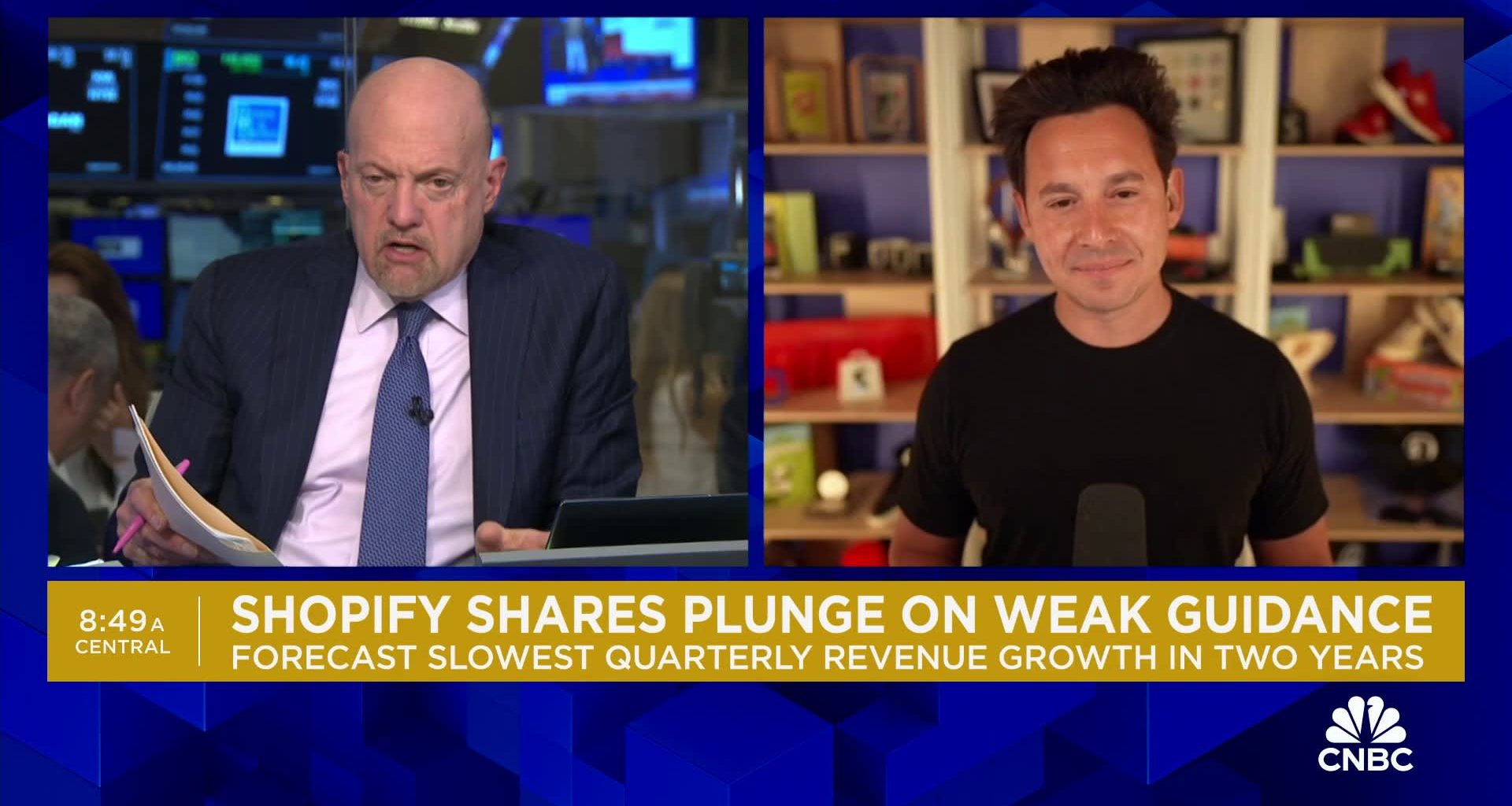Shopify shares tumbled 19% in early trading on Wednesday, shaving almost $20 billion off the company’s value, after the company gave revenue and profit guidance for the current quarter that spooked investors.
Here’s how the company did for the first quarter, compared with consensus expectations from LSEG:
- Earnings per share: 20 cents adjusted vs. 17 cents expected
- Revenue: $1.86 billion vs. $1.85 billion expected
The better-than-expected first-quarter results were overshadowed by Shopify’s outlook for the current quarter. The Canadian e-commerce company said it expects second-quarter revenue to grow at a high-teens percentage rate year over year, which is in line with consensus estimates for growth of 19.5%, but still represents a slowdown from recent quarters. Shopify has posted year-over-year revenue growth in the low-to-mid twenties for the past six quarters.
On a conference call with analysts, Shopify executives said consumer spending in the U.S. remains strong, but “we have factored in headwinds related to [foreign exchange] from the strong U.S. dollar and some softness in European consumer spending in our Q2 outlook.”
Gross margins for the second quarter are expected to decrease by about 50 basis points compared with the first quarter, as a result of the sale of Shopify’s logistics business to freight forwarder Flexport last May. Meanwhile, Shopify said it expects operating expenses to increase in the low-to-mid single digits quarter-over-quarter, while Wall Street had projected flat growth.
Baird analysts said in a note to clients Wednesday morning that the higher operating expense guide clouded “an otherwise solid Q1 report as the company is probably leaning into marketing and R&D (AI/GenAI) investments.”
Shopify, which makes tools for companies to sell products online, in recent quarters has stepped up its AI features for businesses, including “Shopify Magic,” which can automatically generate listings and edit images, among other things. Rivals including Amazon, Etsy and eBay have also introduced AI features for sellers on their platforms.
“Without a clear positive impact on [gross merchandise volume] and revenues from recent investments, investors will question the margin trajectory which will rerate the stock a bit,” the Baird analysts wrote. They have an outperform rating on Shopify’s stock.
While it has invested in AI, Shopify has pulled back in other areas like logistics services. Last May, the company laid off 20% of its workforce as it navigated a post-pandemic slump in e-commerce.
Shopify President Harley Finkelstein said in an interview with CNBC’s “Squawk on the Street” that the company is “long-term-focused.”
“We want to be able to make those investments for the future, which is why we gave the guide we did,” Finkelstein said.
The company reported a net loss of $273 million, or 21 cents per share, compared with a profit of $68 million, or 5 cents per share, during the year-ago quarter.
Shopify said gross merchandise volume, or the total volume of merchandise sold on the platform, increased 23% to $60.9 billion. That surpassed consensus expectations of $59.5 billion, according to StreetAccount.
Read More: World News | Entertainment News | Celeb News
CNBC
